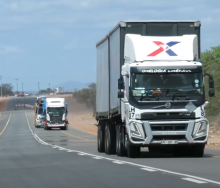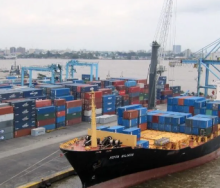The South African Table Grape Industry (SATI) is taking the lead in a groundbreaking initiative to tackle peak season port congestion in the port of Cape Town by means of data modelling.
Since the pandemic, delays and inefficiencies in the port have wreaked havoc in the Western Cape export fruit industry every summer, leading to some shipping lines bypassing the port altogether. High winds further exacerbated delays.
As a result, producers and exporters in the table grape and other fruit industries have suffered billions in losses due to penalties and reduced income because perishable, high-quality product reached retailers in export markets long past its prime and close to expiry dates, forcing retailers to sell them at discounted rates.
Jacques Ferreira, manager of commercial industry affairs at SATI, told a meeting of the Exporters Club Western Cape that the aim was to alleviate export pressure on the port between weeks 46 and 12 of the export season, and to devise the most optimal product split per available port (Cape Town, Port Elizabeth, Durban and Walvis Bay) to facilitate table grapes being exported within seven to ten days after harvest.
Carsten Schubert, sales executive at Transnova, explained that the model was based on a “digital twin” whereby the entire supply chain was recreated digitally, enabling industry to identify and solve problems proactively.
“This means you no longer have to do things by trial and error or be reactionary. Within the digital twin you can see how things flow physically and start to identify bottlenecks and constraints. You can then start to run optimisation and run different scenarios – what would happen if, for instance there’s more wind in Cape Town, if Durban increases capacity and how to leverage available options.”
The digital twin contains deep granular data of supply chain functioning and enables industry to also run costs of various mitigating measures.
Schubert expects the model to be complete by July, after which modelling can begin, and with that proactive planning the industry can prepare for likely problems before they occur and then lose less time while implementing mitigation measures.













